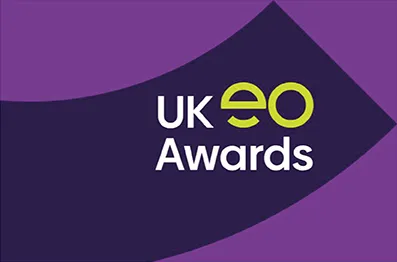Succession planning is one of the most significant decisions a business owner will face. With evolving tax policies and an increasing focus on sustainable business practices, Employee Ownership Trusts (EOTs) are emerging as a forward-thinking option. An EOT not only ensures business continuity and preserves company values but also offers substantial tax benefits and fosters a culture of inclusivity and engagement.
Ison Harrison Solicitors have firsthand experience with this transition, having moved to an employee-owned structure themselves. To shed light on EOTs and their advantages, Richard Coulthard, Director and Head of Corporate at Ison Harrison, answered some of the most frequently asked questions about this innovative business model.
What is an Employee Ownership Trust (EOT)?
An Employee Ownership Trust (EOT) is a business structure in which the employees become beneficiaries of a trust that owns the company. This model allows employees to have an indirect stake in the business, fostering a sense of ownership, shared responsibility, and collaboration.
EOTs were introduced in the UK in 2014 to encourage employee ownership and provide a viable succession planning route for business owners. They are particularly attractive to businesses looking to preserve their legacy, values, and workforce while transitioning ownership.
Key Benefits of an EOT
- Tax Advantages – A standout benefit of an EOT is its tax efficiency. When a business owner sells a controlling interest (51% or more) to an EOT, they are exempt from Capital Gains Tax. Additionally, employees can receive annual bonuses (up to £3,600 per year) tax-free, which serves as a major morale booster.
- Employee Engagement and Retention – EOTs create a culture of inclusivity and engagement. Employees feel valued as part-owners of the company, which can lead to increased productivity, lower turnover rates, and a stronger commitment to business success.
- Business Stability – By spreading ownership across employees, an EOT provides a stable foundation for long-term sustainability. It reduces the risk of ownership being transferred to external parties who may not align with the company’s vision.
How Does the Transition to an EOT Impact Employees?
Employees experience several benefits from an EOT:
- Enhanced Motivation – As beneficiaries of the trust, employees share in the success of the business, creating a sense of ownership.
- Job Security – EOTs often prioritise stability and sustainability, reducing the likelihood of layoffs or drastic operational changes.
- Increased Engagement – Employees are more invested in the company’s performance and long-term goals.
At Ison Harrison, transitioning to an employee-owned model has significantly enhanced the firm’s positive culture, fostering greater employee engagement and a stronger sense of collective purpose.
How Long Does It Take to Set Up an EOT?
The timeline for establishing an EOT typically ranges from three to six months, depending on the complexity of the business. Key steps include:
- Valuation – Determining the fair market value of the business.
- Trust Formation – Setting up the legal framework for the EOT.
- Financing – Structuring the purchase of shares, often with deferred payments funded by future profits.
- Employee Communication – Ensuring transparency so employees understand and embrace the change.
Is an EOT Right for Your Business?
Consulting with legal and financial advisors is crucial to evaluating whether an EOT aligns with your business’s needs. Factors such as profitability, leadership goals, and employee culture should be carefully considered.
If you’re exploring an EOT or have questions about the process, contact Richard Coulthard at Ison Harrison Solicitors for tailored advice.
So why are more businesses choosing to become EOTs?
With significant changes to the tax regime on the horizon, business owners must rethink their succession planning strategies. From April 2025, traditional business sale routes will become less tax-efficient, creating an urgent need to explore alternative methods like Employee Ownership Trusts (EOTs).
An EOT allows business owners to sell a controlling interest in their company to a trust, benefiting employees directly. One of the most attractive features is the complete exemption from Capital Gains Tax when selling to an EOT. This makes it a highly tax-efficient option, especially compared to other sale methods that will soon incur heavier tax burdens.
Beyond tax advantages, EOTs offer a sustainable succession model. They preserve a company’s legacy, ensure employee retention, and foster a culture of shared responsibility. Employees become stakeholders, incentivising them to drive the business forward.
At Ison Harrison, they transitioned to an employee ownership model, and the results have been transformative. Their team is more engaged, the culture is more cohesive, and the business is better positioned for long-term success.
With tax policies tightening, business owners need to act swiftly to explore this beneficial structure. Starting the process now ensures you can maximise the available advantages while securing your company’s future. EOTs not only provide an efficient exit strategy but also enable businesses to thrive under a shared ownership model.
For expert guidance on transitioning to an EOT, contact Richard Coulthard at Ison Harrison Solicitors.
Complete this form and one of the team will get back to you.
"*" indicates required fields



